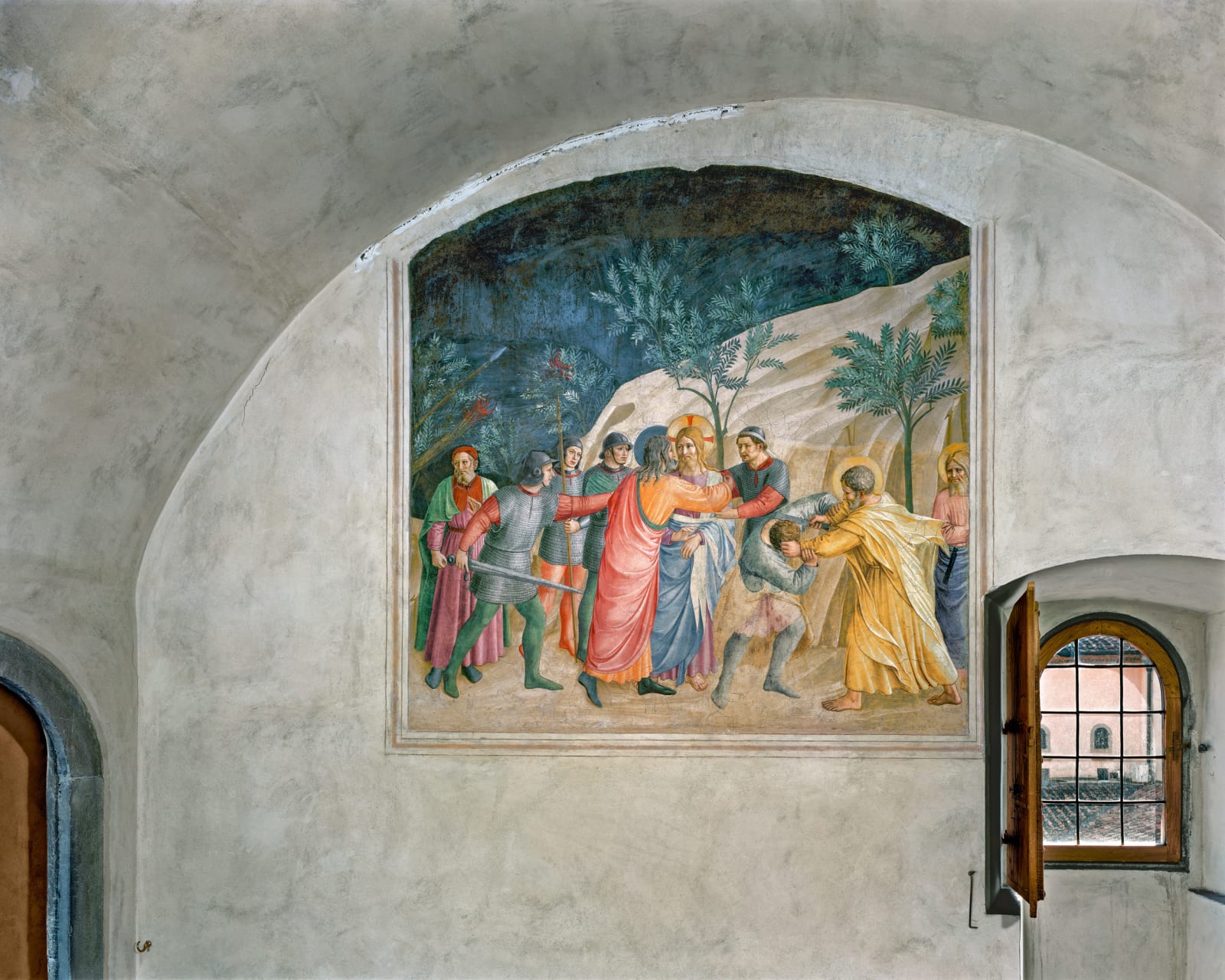
Robert Polidori
The Capture of Christ by Fra Angelico, Cell 33, Museum of San Marco Convent, Florence, Italy, 2010
archival pigment print mounted to dibond
50 x 60 inches
127 x 152.4 cm
127 x 152.4 cm
Edition of 5 + 2 APs
The Lay Brothers' Cells (Cells 31-35) Cell 33 featured in the present work Following the example set by the Benedictines of Vallombrosa, Dominican lay brothers or conversi belonged to the...
The Lay Brothers' Cells (Cells 31-35)
Cell 33 featured in the present work
Following the example set by the Benedictines of Vallombrosa, Dominican lay brothers or conversi belonged to the secular world and were excluded from priestly functions. They attended to the material necessities of the friary. They usually came from the poorest classes and were relatively uneducated.
The San Marco chapter assigned to its lay brothers a series of seven cells in the northern range of the friary overlooking the cloister, served by a corridor between the priory’s two staircases. In order to make the more obscure messages easier to understand, Fra Angelico decided, when frescoing these cells, to follow the Gospel according to St Matthew, the most coherent, systematic and didactic of the four.
...
In the Arrest of Christ (cell 33), a night scene illuminated by torches, which light up the garments of the Jews and the soldiers’ metallic armour, the details follow one another as in a frieze: the unsheathed swords, sticks, the kiss of betrayal, Christ’s resignation, Peter’s short sword, and his futile agitation. Salvation is achieved through compliance with and obedience to the Father.
- P. Morachiello, Fra Angelico The San Marco Frescoes, 1996, p. 295.
Cell 33 featured in the present work
Following the example set by the Benedictines of Vallombrosa, Dominican lay brothers or conversi belonged to the secular world and were excluded from priestly functions. They attended to the material necessities of the friary. They usually came from the poorest classes and were relatively uneducated.
The San Marco chapter assigned to its lay brothers a series of seven cells in the northern range of the friary overlooking the cloister, served by a corridor between the priory’s two staircases. In order to make the more obscure messages easier to understand, Fra Angelico decided, when frescoing these cells, to follow the Gospel according to St Matthew, the most coherent, systematic and didactic of the four.
...
In the Arrest of Christ (cell 33), a night scene illuminated by torches, which light up the garments of the Jews and the soldiers’ metallic armour, the details follow one another as in a frieze: the unsheathed swords, sticks, the kiss of betrayal, Christ’s resignation, Peter’s short sword, and his futile agitation. Salvation is achieved through compliance with and obedience to the Father.
- P. Morachiello, Fra Angelico The San Marco Frescoes, 1996, p. 295.
